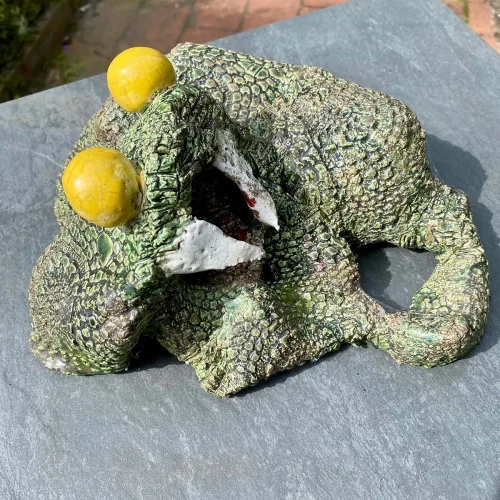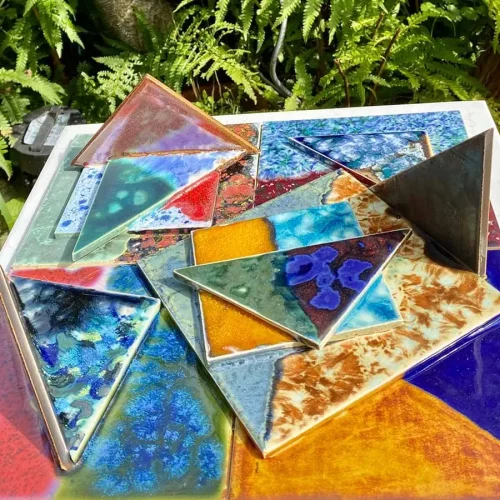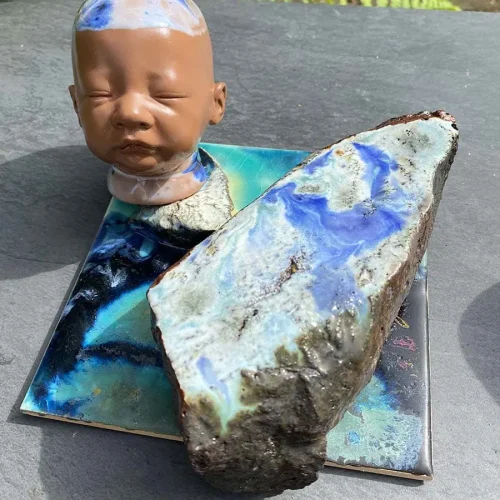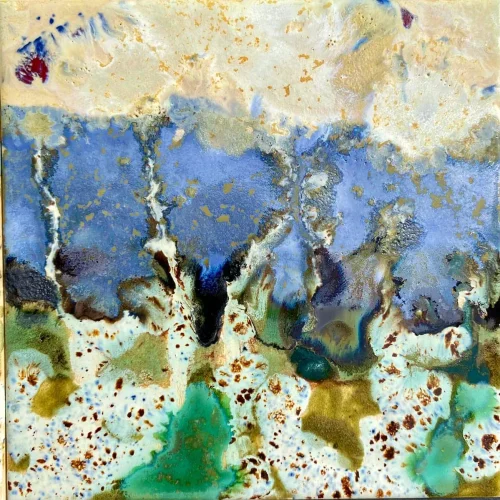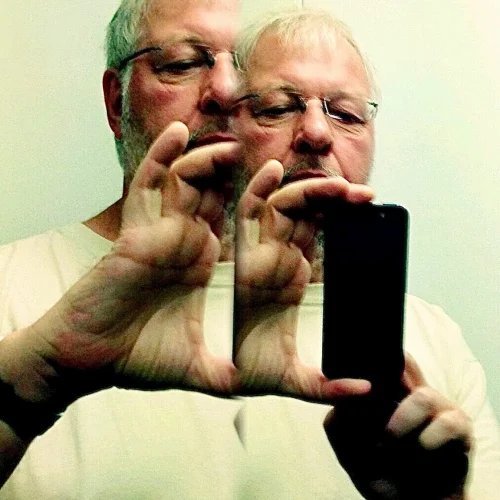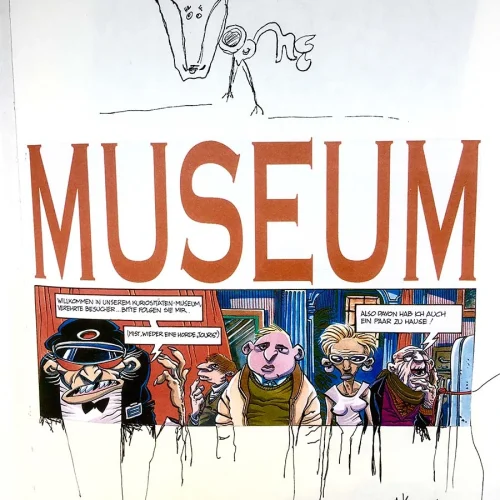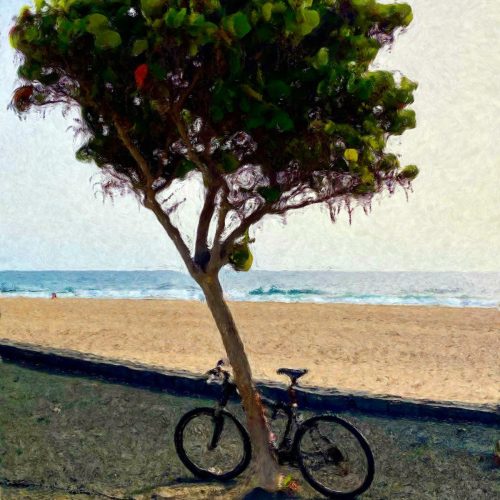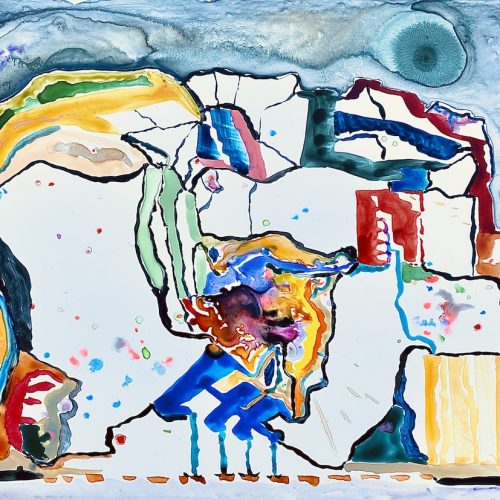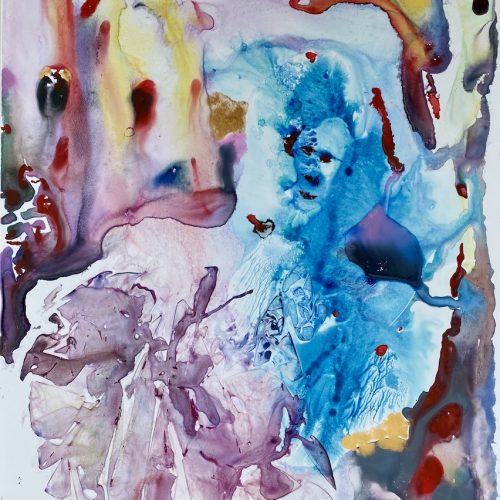Counter question: Why do children play? Even as a little boy, I spent hours in a world of my own in the attic with knights, cowboys and Indians, with electric trains, with building materials and stacked towels, just for myself and on many days, again and again, with extraordinary joy. Everything was possible in this world. Even Superman came along at some point, completely logical. I drew whatever I wanted with colored pencils because I enjoyed it, without any aim or purpose, and of course also because my dear parents gave praising comments. That was very satisfying, but not the primary reason for my painting activity. I played and still play the guitar today, preferably for myself. I read novels and watch films. I don’t need applause or an audience for this either, I do it for fun.
Back to the initial question: I make art by still entering my own inner world, for fun. And anyone who would like to take part in my product, picture, sculpture, collage or musical performance as a viewer or listener from outside is welcome, but it is not the primary impulse for my actions. So I have always remained the child from before, self-centered, creator of my own worlds. I experience births and miscarriages, for myself, without judgment.
I could perhaps classify them, divide them into genres, into material groups, but certainly without any additional insight for the viewer.
Overall, my art could be described as strange, disturbing, edgy and warped, partly morbid and dark, partly satirical and sardonic, surreal. But why all the labels: I prefer unique.
Like any creative person, you process all the impressions that have been coming at you since childhood. No artist starts from scratch. He will always fall back on a cultural heritage and experience, then vary it, counteract it, modify it, enrich it. As a child, I made sticky pictures in kindergarten, painted with chalk and colored pencils, and printed with potatoes. Today I still make collages, work with chalk and colored pencils, and have printed.
My cultural socialization – today we call it appropriation – began back then, also stimulated by my mother, who was very creative, for example with modern weaving. Over the years I have entered the world of books, novels, fairy tales and legends, science fiction, fantasy. Got to know hundreds of characters and motifs. Over time, preferences naturally emerge: I can immerse myself in the world of a dystopia like Orwell’s 1984 rather than in the world of Harry Potter. I can engage much more intensively with dark, strange images in an exhibition rather than with summery, impressionistic garden landscapes, regardless of the respective design quality. All these impressions shape my thoughts and my imagination. My particular interest has always been and continues to be in the strange, the deviant in literature and art. But not only: I also deal with form. You can’t miss the above-mentioned labels on my stones. I just do what I want.
I don’t want to name just one, but rather list a whole series. I have to mention Hieronymus Bosch as a representative of surrealism, Max Ernst as a gifted collagist, and grotesque and expressionist representatives such as James Ensor, Otto Dix and Paul Rebeyrolle. The COBRA group, namely Carel Appel and Lucebert, who give a new view of the world in a colorful and childlike, playful way, are to be listed here, but also the outsiders and art-brut, who are mostly unknown by name, are soulful with an inner passion. Representatives who are able to give space to their own worlds far away from convention. Not to forget street art and graffiti, mostly the fringe areas of art.
In being brave. Intimate encounters and discussions with objects by such artists in almost deserted museums, galleries and backyards have repeatedly encouraged me to give free play to my peculiar creativity. Photos from exhibitions, catalogs and magazines find their way into my collages; I make this world my own, I take details, reassemble them, build my own world from all these impressions.
Assemblages were created in all possible sizes over a long period of time: often combinations of found, worked and processed materials, with Art Brut elements, with collages, in color, often figuratively designed, without stylistic limitations.
My box assemblages function formally as collages with space, boundaries and frames. One’s own collages, pictures and sculptures mix with foreign objects, cross-culturally, so to speak. They are actually three-dimensional collages. Each box has its own story. The scene in the box entitled ‘the dialogue’, for example, raises questions that every viewer can answer in any way, although I admit that the various elements steer him in a certain direction: the living room wallpaper as middle-class, unfashionable, the rigid one , old woman as listener and recipient of the message, the sleeping, perhaps dead animal in the center… You can imagine a lot. All of my works are seen as an offer to the imagination, a remix of reality.
The appeal lies in the unexpected, unusual combination of the individual elements. Process these as you wish, but don’t get stuck at the level of naming the individual objects. Make up a more or less plausible story.
I don’t like and can’t explain such boxes, but I like to hear the viewers’ fantasy stories about them.
The ability to create digital collages and images on the iPad using small apps and color filters resulted in better quality collages. The new music production apps, synthesizers, drums, modular elements, etc. also made it possible for us amateurs to suddenly produce entire pieces of music. The videos take it a step further. Here too, it is the combination of elements that brings the additional profit.
My photos, pictures and collages serve as additional visual stimulus to my mostly instrumental-electronic music pieces.
But such a combination also works the other way around: you let the images pass by on the screen, which are accompanied by the music and thus gain an additional dimension.
I recommend listening to the videos loudly with headphones.
Honestly no. Time required and costs for the presentation
In my opinion, (advertising, texts, framing, pedestals, light installation, etc.) are not in a balanced relationship with the expected audience interest. How often have I visited smaller museums or galleries where only a few interested people were lost. I could imagine that dear friends and nice acquaintances would like to come to an exhibition opening in large numbers, but understandably they wouldn’t come again in the coming weeks. Since a wide audience currently only comes to well-known names and heavily advertised, large events, the small, fine venues are falling by the wayside.
Assume that I personally have no commercial interest. I am fortunate and free not to have to sell any of my works. It is the happiness of small children who are only allowed to paint beautiful pictures for themselves.


















































